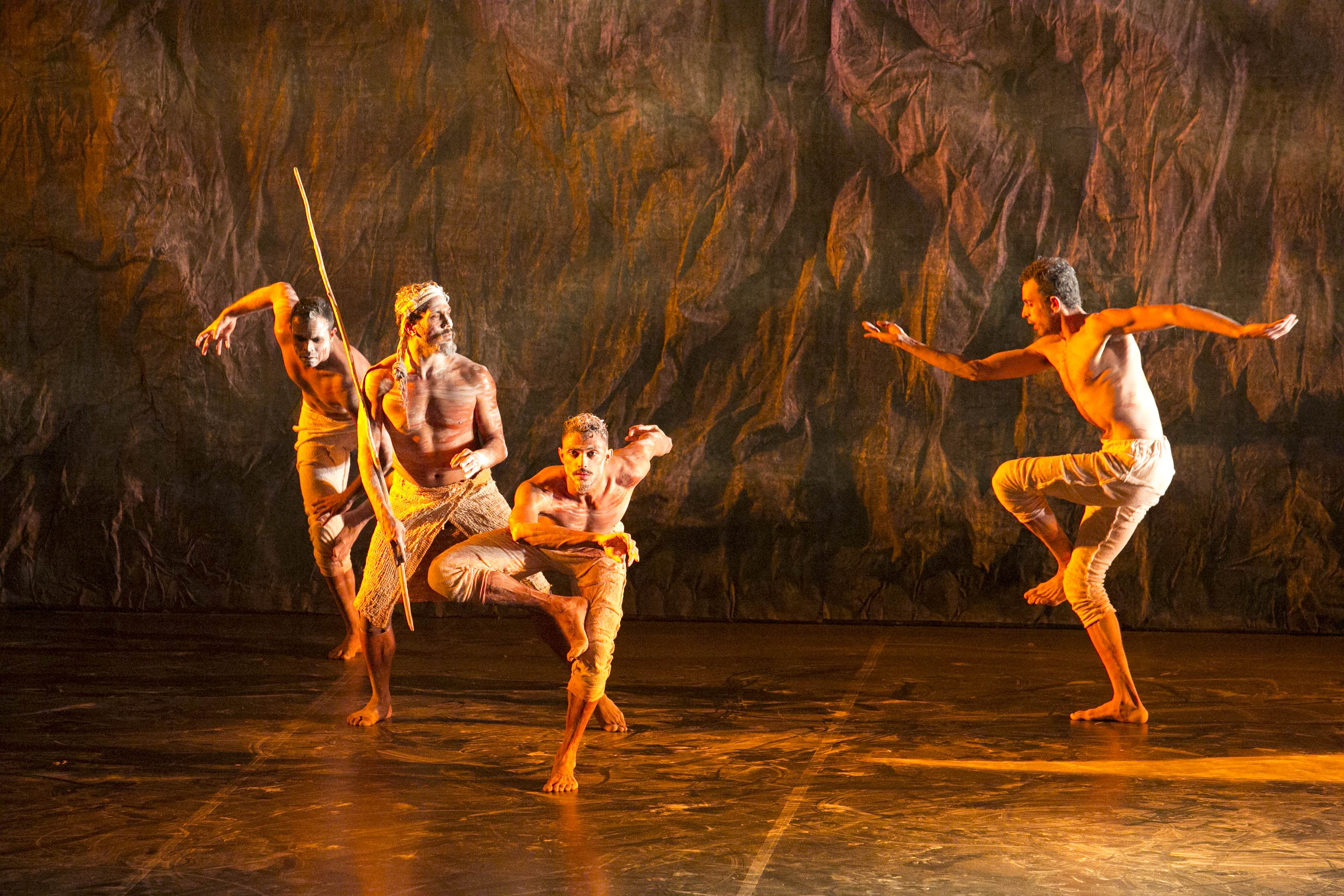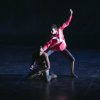For Arrernte man Kaine Sultan-Babij, dancing the part of a colonial man is nothing far from “awkward”.
“I know it’s not me,” he hesitates, adding, “I guess it’s just a difficult position to be in, and in a way that adds to the character in the story.”
The colonial character is one of four played by Kaine in the storytelling of Patyegarang—the latest vision realised by Stephen Page, Artistic Director at Bangarra Dance Theatre.
“Patyegarang is a story about awakening the positive stories we have in this country about black and white Australia… and trying to inspire the imagination about first contact,” Kaine explains.
The dance performance is based on the true notebooks of Lieutenant William Dawes who befriended an Eora woman, Patyegarang, in the years following the invasion of this land.
“William Dawes’ diaries were discovered in 1972… and I think Stephen has been wanting to tell this story for ages,” Kaine tells me.
While Australians slowly learn of the horrors perpetrated against the First People of this country, Patyegarang is described as a supplementary tale of a history that could’ve been.
I listen to Kaine and imagine a country that grew from the teachings and culture of one Eora woman to one fascinated and enlightened English man.
But Kaine explains Patyegarang is not without tension.
“There’s a section called Hunt … it’s very… physical. Some of us play Eora people, and some of us play the colonial men. There’s fighting, tension and a shifting of power between the two.”
Power, I’m told, that does not end in one side’s hands or the other’s.
“The physicality is pretty even play; when one person is chucked, the other is chucked back. Like push and pull…and then it just stops. As if to say ‘we don’t know where the power lies anymore, but we have scars and we’re bleeding. We just have to move on.’”
As Kaine details the scene I am aware of him describing the colonial man.
I think of the racist caricatures Indigenous people have been reduced to in film, literature and TV throughout history, and compare to Patyegarang’s realisation of white men with Aboriginal dancers.
“Not by colour,” Kaine points out.
“It’s purely a physical thing. I could be colonial or Eora—it’s the movement, and facial expression that tell who I am.”
Patyegarang’s narrative of two cultures seems inextricably linked to the fusion between contemporary and traditional dance.
“Yes. Both foundations are the same. They kind of sprang from one seed and went on their own journeys,
“The contemporary dance and ballet we do informs our bodies so they are limber and strong. The traditional dance grounds us and tells us why we’re here in the first place—in Bangarra—and it connects us to our cultural roots,” he adds.
Bangarra Dance Theatre’s dancers travel back to community—for Kaine, home is Harts Range in the Central Desert region of the Northern Territory.
“It’s where I draw my strength from.
“On my recent trip I was so amazed by the richness up there. The culture is so strong and the people are thriving.”
On what the story of Patyegarang and William Dawes means for contemporary Australia, Kaine is hopeful.
“I guess I’ve only ever known negative stories of our history—but this was a positive relationship that existed, and one of the very first interactions between colonial and aboriginal. It’s nice to know that from day dot, there has been good there.”
Patyegarang will be presented at the Playhouse, Arts Centre Melbourne, from 28 August to 6 September 2014.
By Rachael Hocking
@R_nungarrayi
Header image by Jess Bialek




